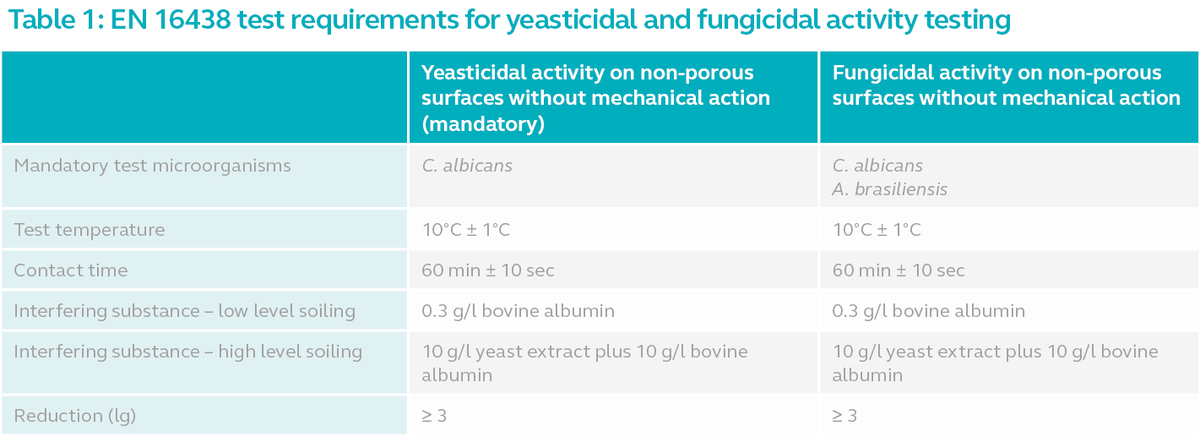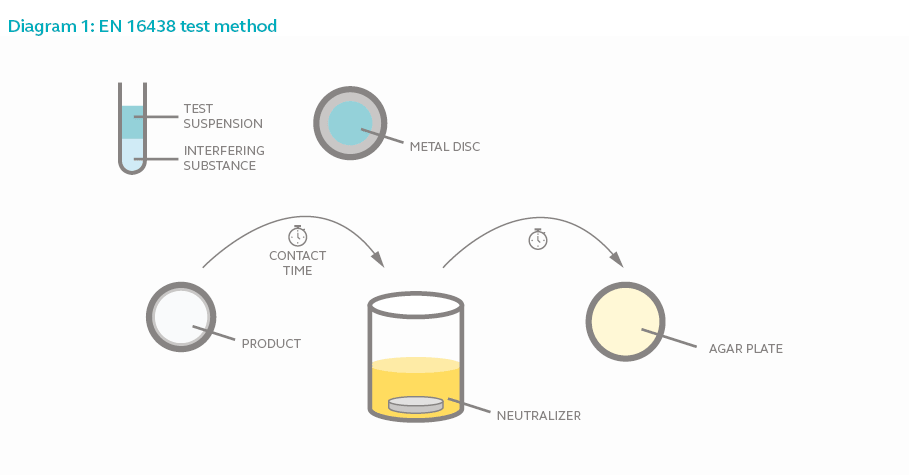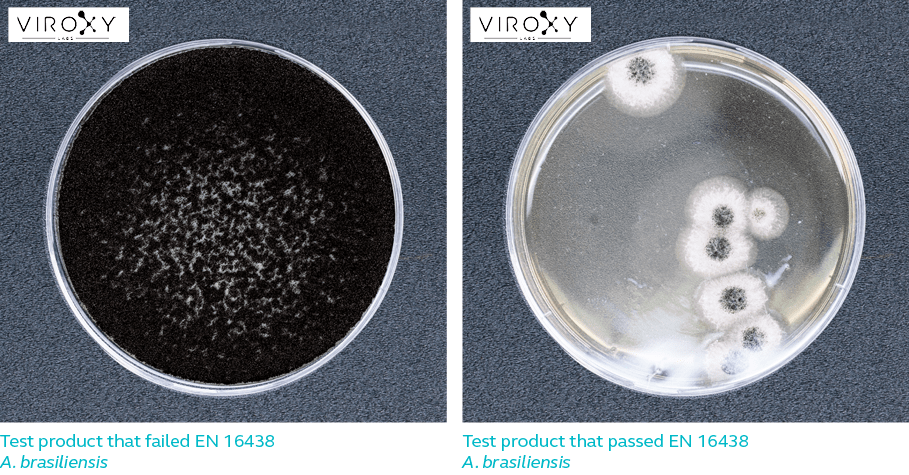EN 16438:2014
Quantitative surface test for the evaluation of fungicidal or yeasticidal activity of chemical disinfectants and antiseptics used in the veterinary area on non-porous surfaces without mechanical action.
EN 16438 is a phase 2 step 2 carrier test for disinfectants intended for use on non-porous surfaces in the veterinary area without mechanical action. The test evaluates the efficacy of the product against yeast and/or fungi.
Yeast and fungi occur naturally in the environment. Although many assume both microorganisms are the same, they are not. Fungus is a multi-celled microorganism that reproduces through spores. Yeast is a form of fungus but it is single-celled and it reproduces through mitosis. Mould is another form of fungi. Efficacy against mould is a mandatory requirement according to the European Norms.
Test Conditions
The standard refers to the parameters to be observed when testing products intended for surface disinfection without mechanical action. This includes the test microorganism, test temperature, carrier, contact time and interfering substance.
- Test microorganism refers to the mandatory list of microbes that must be used in the test to determine the antimicrobial activity of the product. The mandatory microorganisms are assumed to represent all microbes in its group.
- Test temperature refers to the temperature in which the test must be conducted. The general assumption is that disinfectants are less effective in low temperatures compared to higher temperatures.
- Carrier refers to the material used in the test to simulate a contaminated instrument in the medical area. This test uses metal disc as a carrier.
- Contact time refers to the minimum duration a product must remain in contact with the microbes for the product to be effective.
- Interfering substance refers to substance used in the test to simulate the possible contaminants that co-occur with microbes in the actual environment.
Refer to the table below for the minimum requirements for yeasticidal and fungicidal activity testing.

Test Method
In a carrier test, the test microorganism is added to the selected interfering substance and applied onto a metal disc. The metal disc represents an actual instrument or carrier of microorganism. The disc is then left to air-dry to simulate surface or carrier of microorganism. Next, test disinfectant is applied to the inoculated area for the duration of the contact time. The carrier is then submerged into a neutralizer solution to prevent continued activity. A sample of the neutralizer solution is then acquired, plated and incubated for 3 days. The number of test microorganism recovered is compared to the microorganism recovered from the control sample (where test microorganism is exposed to water instead of disinfectant) to determine if the test product is effective.

Log Reduction
Log reduction refers to the extent to which a product is capable of reducing the number of microbes. For example, 4-log reduction means the number of microorganisms on a surface has been reduced by 10 000 times. A product that is 99.9% effective against a certain microbe is said to have achieved 3-log reduction against that microbe.
For a product to pass EN 16438, it must be able to achieve 3-log reduction against the respective test microorganisms listed in Table 1 for yeasticidal and fungicidal activities. In other words, the product must be able to kill 99.9% yeasts and fungi while meeting all the other requirements of the European standard.


